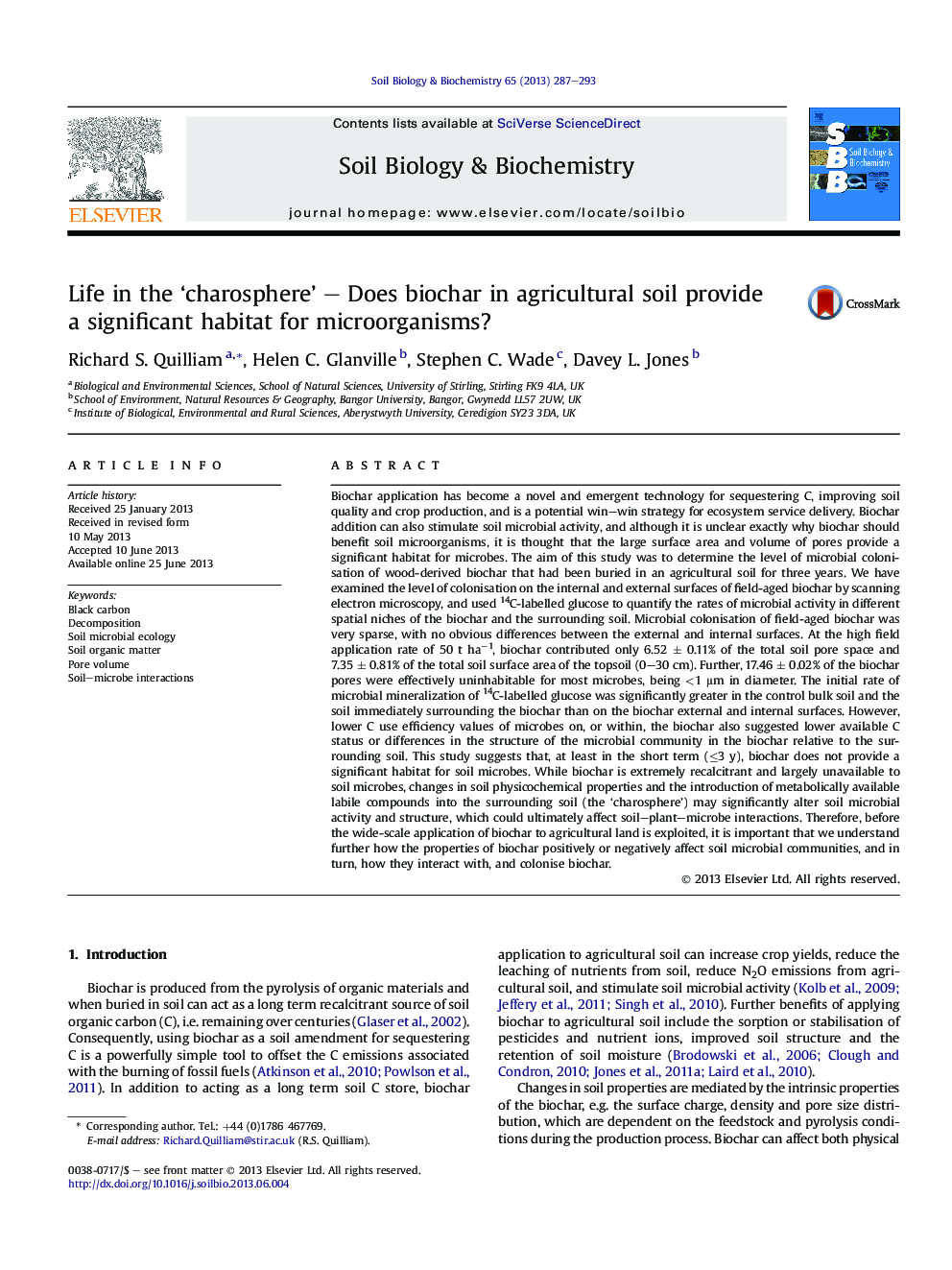| کد مقاله | کد نشریه | سال انتشار | مقاله انگلیسی | نسخه تمام متن |
|---|---|---|---|---|
| 8365224 | 1542619 | 2013 | 7 صفحه PDF | دانلود رایگان |
عنوان انگلیسی مقاله ISI
Life in the 'charosphere' - Does biochar in agricultural soil provide a significant habitat for microorganisms?
ترجمه فارسی عنوان
زندگی در 'چاروسفر' - آیا زیست باری در خاک های کشاورزی فراهم می کند زیستگاه قابل توجهی برای میکروارگانیسم ها؟
دانلود مقاله + سفارش ترجمه
دانلود مقاله ISI انگلیسی
رایگان برای ایرانیان
کلمات کلیدی
کربن سیاه، تجزیه، بوم شناسی خاک، ماده آلی خاک، حجم پورت تعاملات خاک-میکروب،
موضوعات مرتبط
علوم زیستی و بیوفناوری
علوم کشاورزی و بیولوژیک
دانش خاک شناسی
چکیده انگلیسی
Biochar application has become a novel and emergent technology for sequestering C, improving soil quality and crop production, and is a potential win-win strategy for ecosystem service delivery. Biochar addition can also stimulate soil microbial activity, and although it is unclear exactly why biochar should benefit soil microorganisms, it is thought that the large surface area and volume of pores provide a significant habitat for microbes. The aim of this study was to determine the level of microbial colonisation of wood-derived biochar that had been buried in an agricultural soil for three years. We have examined the level of colonisation on the internal and external surfaces of field-aged biochar by scanning electron microscopy, and used 14C-labelled glucose to quantify the rates of microbial activity in different spatial niches of the biochar and the surrounding soil. Microbial colonisation of field-aged biochar was very sparse, with no obvious differences between the external and internal surfaces. At the high field application rate of 50 t haâ1, biochar contributed only 6.52 ± 0.11% of the total soil pore space and 7.35 ± 0.81% of the total soil surface area of the topsoil (0-30 cm). Further, 17.46 ± 0.02% of the biochar pores were effectively uninhabitable for most microbes, being <1 μm in diameter. The initial rate of microbial mineralization of 14C-labelled glucose was significantly greater in the control bulk soil and the soil immediately surrounding the biochar than on the biochar external and internal surfaces. However, lower C use efficiency values of microbes on, or within, the biochar also suggested lower available C status or differences in the structure of the microbial community in the biochar relative to the surrounding soil. This study suggests that, at least in the short term (â¤3 y), biochar does not provide a significant habitat for soil microbes. While biochar is extremely recalcitrant and largely unavailable to soil microbes, changes in soil physicochemical properties and the introduction of metabolically available labile compounds into the surrounding soil (the 'charosphere') may significantly alter soil microbial activity and structure, which could ultimately affect soil-plant-microbe interactions. Therefore, before the wide-scale application of biochar to agricultural land is exploited, it is important that we understand further how the properties of biochar positively or negatively affect soil microbial communities, and in turn, how they interact with, and colonise biochar.
ناشر
Database: Elsevier - ScienceDirect (ساینس دایرکت)
Journal: Soil Biology and Biochemistry - Volume 65, October 2013, Pages 287-293
Journal: Soil Biology and Biochemistry - Volume 65, October 2013, Pages 287-293
نویسندگان
Richard S. Quilliam, Helen C. Glanville, Stephen C. Wade, Davey L. Jones,
